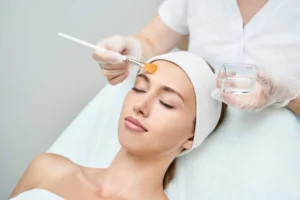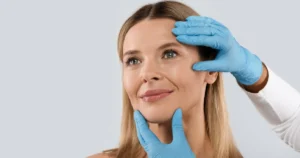
Hair loss can be a distressing journey for many individuals, affecting their self-esteem and confidence. Fortunately, there are various hair restoration techniques available today to address this issue.
In this article, we look into the effectiveness of these methods, shedding light on their success rates and helping you make informed decisions about your hair restoration journey.
Understanding Hair Restoration
Hair restoration, or hair transplantation, involves moving hair from one part of the body to another, typically from a donor site to the balding or thinning area.
The two primary methods for hair restoration are follicular unit transplantation (FUT) and follicular unit extraction (FUE).
FUT includes:
- The removal of a strip of scalp from the donor area.
- Using it in individual follicular units.
- Implanting them in the recipient area.
On the other hand, FUE works on extracting people’s hair follicles straight from the donor site and implants them in the balding area. Both methods have pros and cons, but the success of hair restoration largely depends on various factors.
Factors Affecting the Success of Hair Restoration
Patient’s Age and Hair Loss Stage
The success of hair restoration can vary depending on the patient’s age and the stage of hair loss. Generally, younger individuals with less advanced hair loss tend to have better results. Hair restoration procedures are most effective when there is enough donor hair.
Donor Hair Quality
The quality and thickness of the donor hair play a crucial role in the procedure’s success. If the donor’s hair is weak or sparse, it may not provide the desired coverage or natural look.
Skill and Experience of the Surgeon
Choosing an experienced and skilled surgeon is paramount. Surgeons with a track record of successful procedures are more likely to deliver favorable results. They can accurately assess the patient’s needs, plan the process, and execute it precisely.
Proper Aftercare
Following the surgery, proper aftercare is essential for successful hair restoration. Patients must adhere to post-operative instructions to ensure the newly transplanted hair grafts take root and grow as expected.
Patient’s Expectations
Realistic expectations are crucial for satisfaction. Hair restoration can improve the appearance, but it may not fully replicate the density and appearance of natural hair. Understanding the limitations of the procedure is vital.
Success Rates of Hair Restoration
Follicular Unit Transplantation (FUT)
FUT has been a longstanding method for hair restoration. Its success rate is relatively high, with many patients experiencing significant hair regrowth. The strip method allows for transplanting many hair follicles in a single session. However, it may leave a linear scar at the donor site, which can concern some individuals.
Follicular Unit Extraction (FUE)
FUE is gaining popularity due to its minimally invasive nature and lack of a visible linear scar. The success rate of FUE is also impressive, with patients enjoying natural-looking results. It is particularly suitable for individuals with a limited donor supply or those who prefer shorter recovery times.
Non-Surgical Options
In addition to surgical methods, non-surgical treatments like medication (e.g., minoxidil and finasteride) and low-level laser therapy (LLLT) have succeeded in slowing down hair loss and promoting hair regrowth. These treatments are less invasive but require ongoing maintenance for sustained results.
The Role of Platelet-Rich Plasma (PRP) Therapy
Platelet-rich plasma (PRP) therapy is a non-surgical approach to hair restoration that has gained popularity recently. This treatment involves drawing a minimal amount of the patient’s blood, processing it to concentrate the platelets, and injecting the PRP into the scalp.
PRP therapy is believed to stimulate hair follicles, promote hair growth, and improve hair thickness. While the results may vary from person to person, some individuals have reported success with PRP therapy, particularly when combined with other treatments.
Revitalizing Your Hair with The Natural Growth Factor Injections Therapy at Melindas MedSap & Salon
Hair restoration through Natural Growth Factor injection therapy is a proven method to stimulate hair regrowth and combat hair loss. This three-step process involves minimal downtime and offers a safe, chemical-free alternative for those seeking a fuller head of hair. Let’s explore the procedure and some commonly asked questions.
The Three-Step Process
- Blood Collection:The first step involves drawing a small amount of blood from your arm. This blood is then placed into a centrifuge, a machine that rapidly separates its components based on density.
- Centrifugation:Within about 10 minutes, the centrifuge works its magic, dividing your blood into three distinct layers. The desired growth factors are extracted during this phase, leaving behind unnecessary components.
- Injection:The extracted growth factors are carefully injected into the areas of your scalp that require enhanced hair growth. This precise delivery is accomplished using a syringe.
Results and Safety
Results: Typically, you can expect to see noticeable results from natural growth factor injections within 2-3 months after the initial treatment. However, it’s essential to exercise patience, as the full effects may take up to 6 months to become evident. Consistency in treatment is key to achieving optimal outcomes.
Safety
One of the primary advantages of this therapy is its safety profile. Natural growth factor injections are generally considered safe. The injections are directly administered into the scalp, and they do not contain any harsh chemicals or drugs, minimizing the risk of adverse reactions.
Common Side Effects
While natural growth factor injections are safe, some individuals may experience minor side effects, typically temporary and mild. These side effects include:
- Redness: Some redness at the injection site is common, but it should subside within a few days.
- Irritation: Mild irritation might occur, particularly in the immediate aftermath of the procedure. However, this discomfort is generally short-lived.
- Itching: Itchiness in the treated area can occur but tends to be temporary and manageable.
- Swelling: Sometimes, you may notice slight swelling at the injection site. This is a normal reaction and should resolve independently within a few days.
It’s important to note that these side effects are generally well-tolerated and subside relatively quickly. If you experience any severe or prolonged side effects, it’s advisable to contact your healthcare provider.
Natural Growth Factor Injections Therapy offers a safe and effective way to combat hair loss and stimulate hair regrowth. With minimal side effects and visible results within a few months, it’s a promising option for those seeking a natural solution to hair restoration.
If you’re interested in exploring this treatment further or have any questions, consult with our specialists at Melindas MedSap & Salon today. Your journey to healthier, fuller hair may be just a few injections away.
Key Takeaway
In the quest for successful hair restoration, several factors include the patient’s age, donor hair quality, surgeon’s skill, aftercare, and realistic expectations.
FUT and FUE have demonstrated high success rates, offering practical solutions to hair loss. Additionally, non-surgical options like PRP therapy and medication can complement surgical approaches.
If you’re considering hair restoration, it’s essential to talk with a qualified specialist who can assess your individual needs and recommend the most suitable treatment plan. By doing so, you can increase your chances of achieving successful hair restoration and regaining your confidence. Don’t let hair loss hold you back – take the first step toward regaining your confidence today.
Look at our other services, like IV Infusion and Dermal Fillers too!



